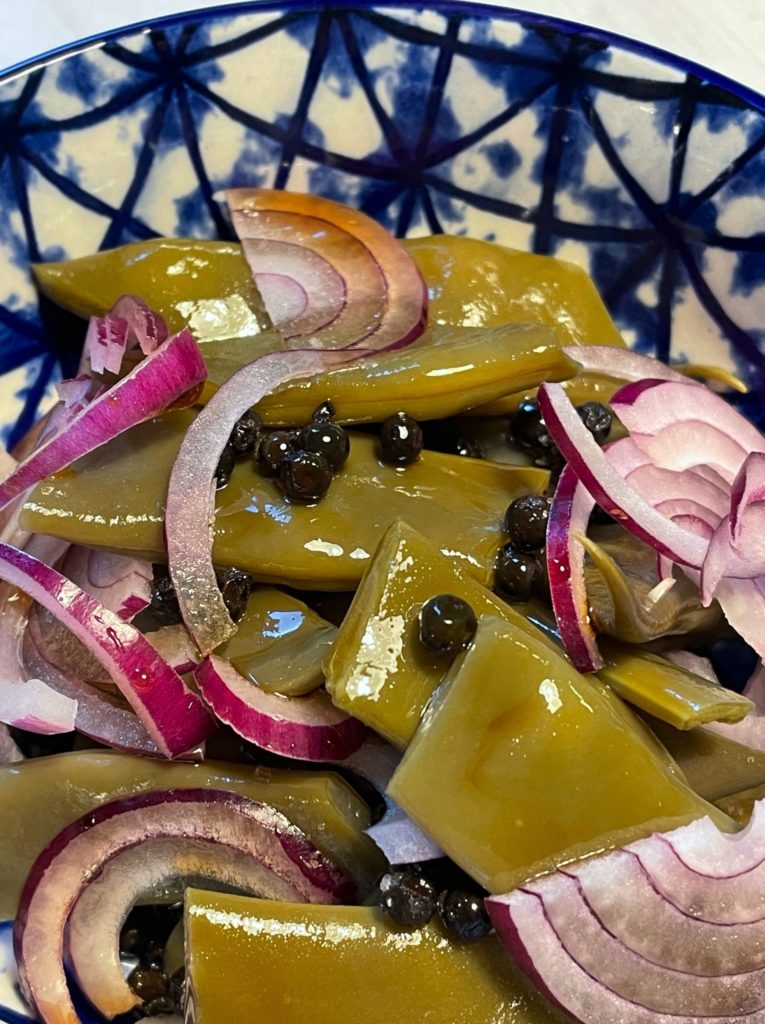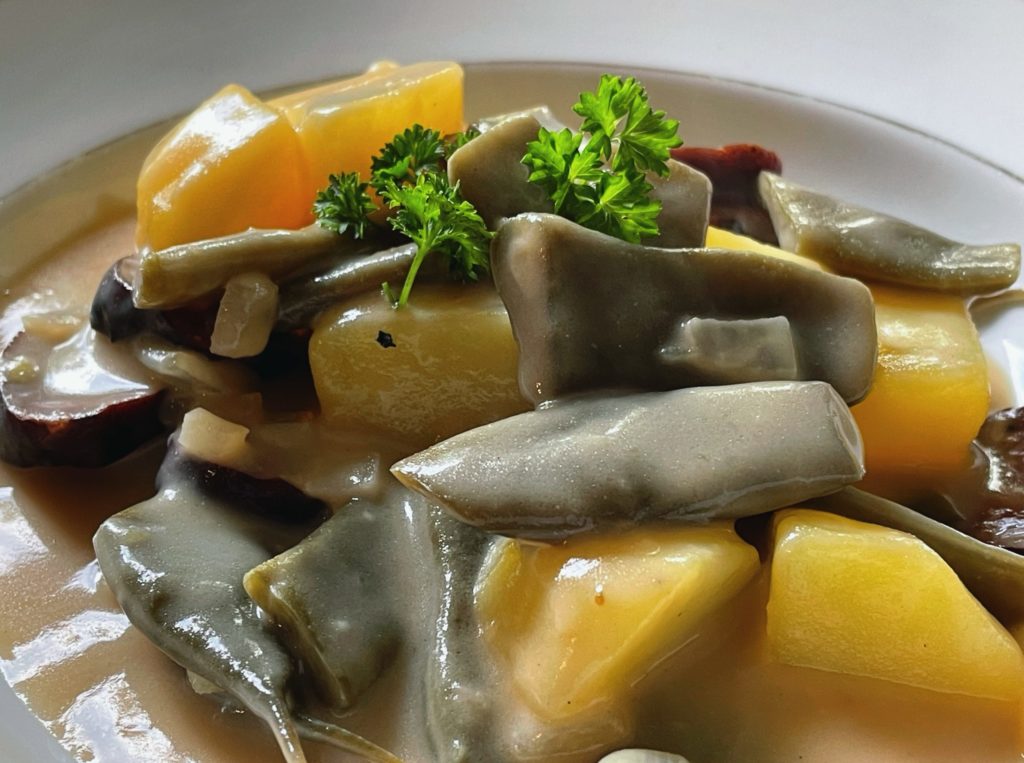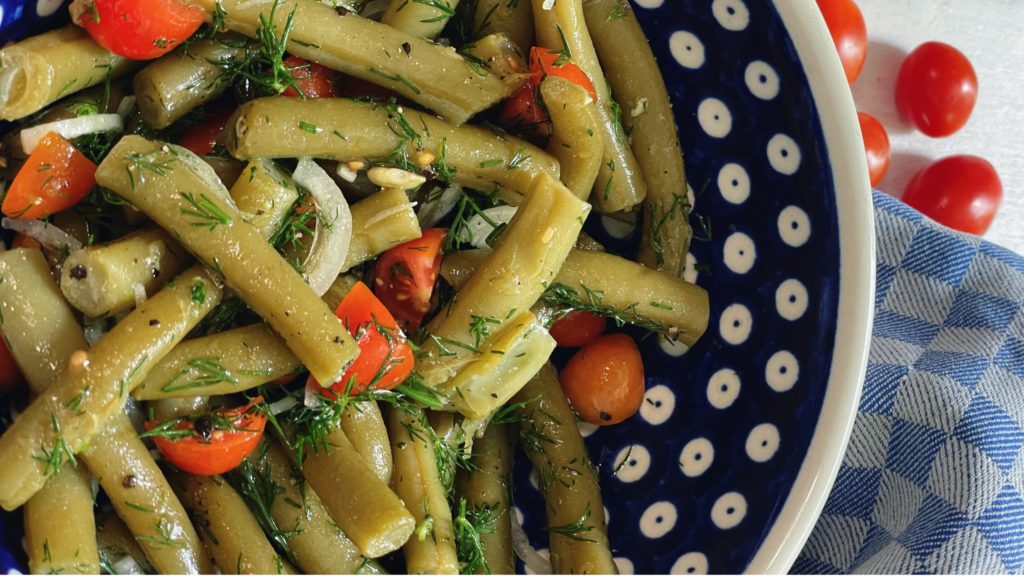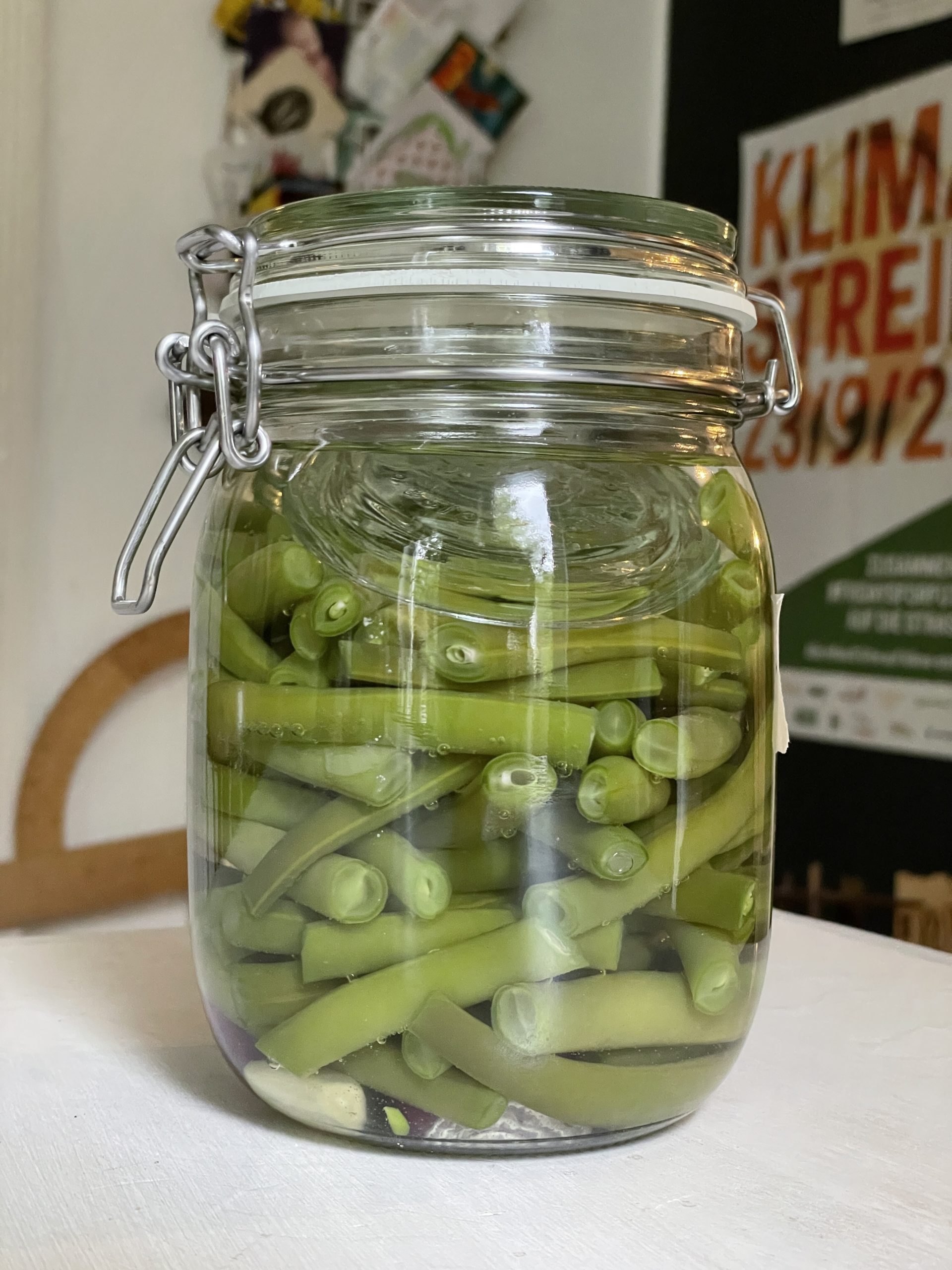The process of lactic fermentation gives the beans a fine and salty sour taste. Fermented green beans are not only delicious, but rich in fiber, vitamins and minerals, making them a healthy addition to our diet.
Jump to recipeAlso known as salty beans, sour beans or runner beans, fermented green beans taste much better homemade than store-bought and also have a higher nutritional value. Of the various methods of preserving fresh green beans and using them in traditional recipes, fermentation saves energy and time and is therefore my favorite.
Green beans have a short season regionally and are available from July to the end of September.
Kids love fermented green beans
If you're looking for a ferment to wow your kids with, fermented green beans are the way to go! Their mild, sweet flavor and crunchy texture make them an ideal vegetable for kids. Plus, this ferment is great for them to help chop. This helps them relate to food and encourages them to try the finished ferment.
Raw green beans are toxic
Green beans and bean seeds, just like other legumes, contain phasin. Phasin is toxic to humans because it causes red blood cells to stick together. Eating raw beans even in small quantities causes stomach and intestinal distress, vomiting or diarrhea.
Perhaps it doesn't matter to nibble on a raw bean once in a while, and it doesn't make any difference to cook the beans for only 8 minutes instead of 10. But eating raw or almost raw beans on a regular basis is not a good idea.
Traditional recipes and grandma's influence
Maybe you know sour bean salad from your grandmother? It is a special treat for me and is associated with many happy memories. To make it, my grandmother mixed the cooked beans with a vinegar-oil marinade. With fermented green beans, you can save the vinegar because they already taste sour due to the lactic acid fermentation.
Green bean soup and sour bean stew also pay homage to family cooking and bring back childhood memories.



Fermentation is preservation
Green beans are a delicious vegetable with a short season that can be preserved by fermentation and enjoyed all year round. Children like green beans and their versatility allows them to be used in a variety of dishes. There are traditional recipes passed down in many families in Western and Central Europe. To carry them on is a heartfelt endeavor.
So, why not get some fresh green beans and discover new taste sensations?
Wild ferments
I like to follow traditions and preserve traditional recipes, but I also like to play with the procedures and flavors. For example, during a vacation on the sailboat, I spontaneously came up with a coastal version of fermented green beans. On the roadside, I collected wild pink dog roses, from which I cooked the brine, and a not quite ripe peach also wandered into the jar.
The ferment has turned out to be a culinary highlight! I have shared the recipe with the editors of DAS! from NDR, you can find it here to do it yourself: https://www.ndr.de/ratgeber/kochen/rezepte/Fermentierte-gruene-Bohnen-mit-Pfirsich-und-Rosen,bohnen244.html
Sources
- Federal Institute for Risk Assessment (BfR) https://www.bfr.bund.de/en/press_information/2021/32/only_enjoy_cooked_beans-278526.html


Wunderbar anschaulich erklärt! Vielen Dank!
Ich hab nur noch eine Frage:
Sollte das Wasser für die Lake (welches mit 20 – 30 g Salz pro Liter vermischt wird)
abgekocht sein?
Herzliche Grüße Michaela
Hej Michaela,
wenn dein Leitungswasser Trinkwasserqualität hat, brauchst du es nicht abzukochen. In Ländern, in denen das Leitungswasser mit Chlor versetzt ist, empfehle ich, Trinkwasser zum Fermentieren zu kaufen.
Gutes Gelingen!
Katsu
Hallo,
ich habe mich neulich mal an Natto aus Kichererbsen versucht. Hat jemand damit Erfahrungen?
Das Thema Natto passte leider nirgendwo hier herein.
Hej Felicitas,
ob die Frage jetzt hier eine:r in den Kommentaren versteckt findet, weiss ich nicht… Ich selber habe das noch nicht ausprobiert und kann dir leider auch nicht helfen. Wenn Du bei Facebook bist, stelle die Frage doch gerne in der Gruppe: https://www.facebook.com/groups/fermentationlove.
Viel Erfolg bei der Hülsenfruchtfermentation!
Katsu
Liebe Katsu,
Ich versuche vergebens, Dein Buch zu bestellen, Paypal stottert und Deine Bankdaten für eine
Überweisung finde ich nicht… Help!
Bei der Gelegenheit habe ich eine Frage: In einem Rezept für fermentierten Stangensellerie
lese ich: 20 g Salz + 400 ml Wasser + 250 ml Apfelessig. Letzteren stelle ich mir selber her. Zum
Fermentieren habe ich ihn nie benutzt.
Hej Ilse,
die Bankdaten kommen per Mail nach deiner Bestellung. Vielleicht klappt es ja morgen besser, machmal will die Technik auch nicht… sonst melde dich gerne nochmal, wir kriegen das auf jeden Fall hin.
Das Sellerierezept klingt nicht so gut. 5% Salz sind recht viel, soviel braucht Stangensellerie nicht. Und durch den vielen Essig wird da auch keine Laktofermentation mehr stattfinden können. Probiere ihn lieber in 2%iger Lake. Ich schneide die Stangen in 1-2 cm breite Stücke, du kannst ihn aber auch grösser lassen. Knoblauch und Chili passen gut dazu, pur wird er auch fein.
Gutes Gelingen!
Katsu